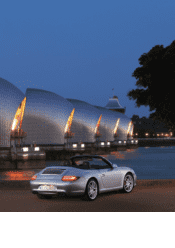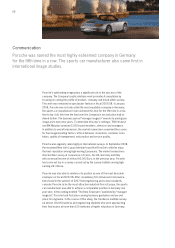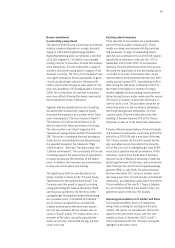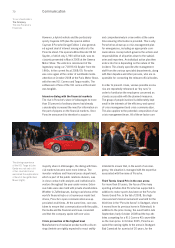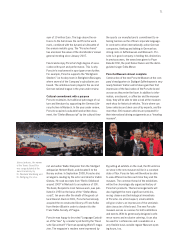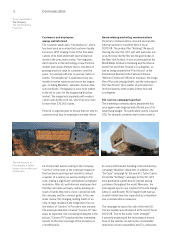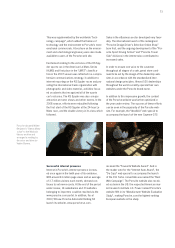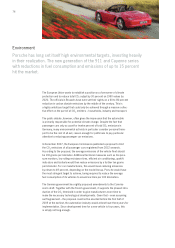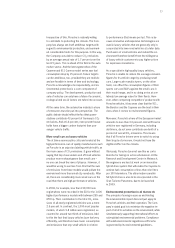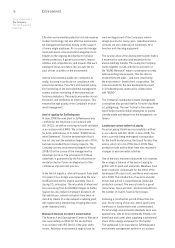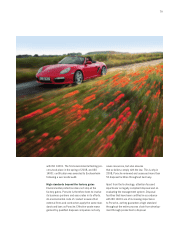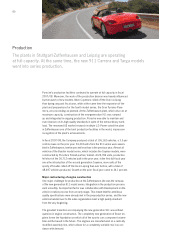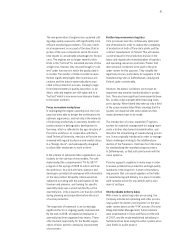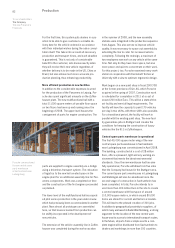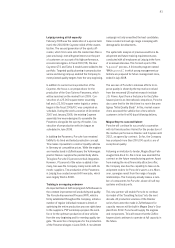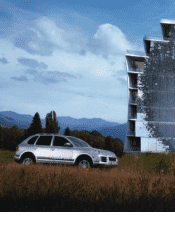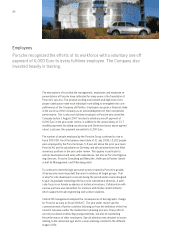Porsche 2007 Annual Report Download - page 79
Download and view the complete annual report
Please find page 79 of the 2007 Porsche annual report below. You can navigate through the pages in the report by either clicking on the pages listed below, or by using the keyword search tool below to find specific information within the annual report.
Environment
Porsche has long set itself high environmental targets, investing heavily
in their realization. The new generation of the 911 and Cayenne series
with reductions in fuel consumption and emissions of up to 15 percent
hit the market.
The European Union wants to establish a position as a forerunner of climate
protection and to reduce total CO2output by 30 percent on 1990 values by
2020. The officials in Brussels have even set their sights on a 60 to 80 percent
reduction in carbon dioxide emissions by the middle of the century. This is
a highly ambitious target that could only be achieved through a massive collec-
tive effort on the part of all CO2emitters – households, industry and transport.
The public debate, however, often gives the impression that the automobile
is primarily responsible for potential climate change. Despite the fact that
passenger cars only account for twelve percent of total CO2emissions in
Germany, many environmental activists in particular consider personal trans-
port to be the root of all evil, reason enough for politicians to pay particular
attention to reducing passenger car emissions.
In December 2007, the European Commission published a proposal to limit
the CO2emissions of all passenger cars registered from 2012 onwards.
According to the proposal, the average emissions of the vehicle fleet should
be 130 grams per kilometer. Additional technical measures such as tire pres-
sure monitors, low rolling resistance tires, efficient air conditioning, upshift
indicators and biofuels would then reduce emissions by a further ten grams
per kilometer. For car manufacturers, this would mean reducing emissions
by eleven to 49 percent, depending on the model line-up. Porsche would have
the most stringent target to achieve, being required to reduce the average
fuel consumption of its vehicles to around six liters per 100 kilometers.
The German government has rightly proposed amendments to the Commis-
sion’s draft. Together with the French government, it supports the phased intro-
duction of the CO2threshold in order to give manufacturers more time to
make the necessary technological developments. Given that – even assuming
swift agreement – the proposal could not be enacted before the first half of
2009 at the earliest, the automotive industry would at best have three years for
implementation. Since development time for a new vehicle is four years, this
is simply not long enough.
76



